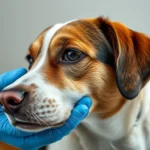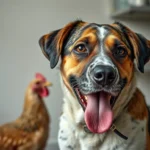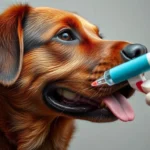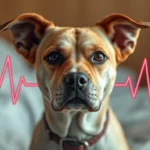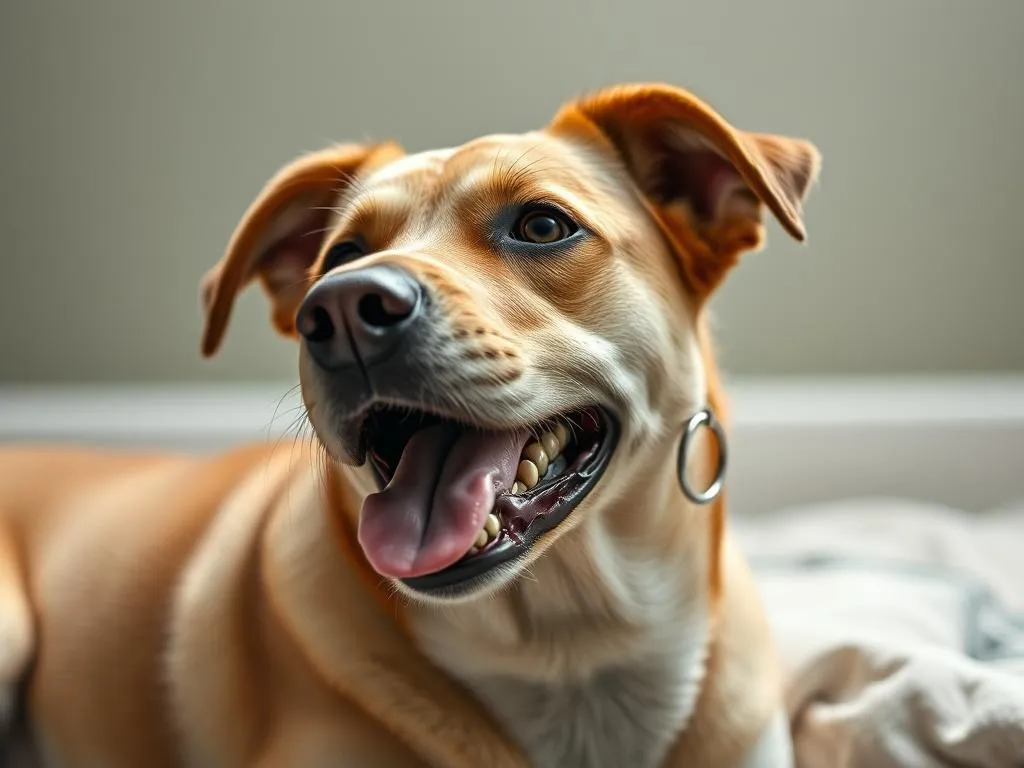
It can be a terrifying moment when you realize that my dog ate an earring. As a pet owner, your instincts may kick in, prompting panic, but understanding the situation can help you respond effectively. In this article, we’ll explore the implications of a dog ingesting foreign objects, what steps to take immediately, and the veterinary care that may be necessary.
Understanding the Problem
Common Items Dogs Ingest
Dogs are naturally curious creatures, often exploring their world through their mouths. Unfortunately, this curiosity can lead them to ingest items that could be harmful. Common foreign objects ingested by dogs include:
- Toys: Soft toys, rubber balls, and squeaky toys can break apart and be swallowed.
- Clothing: Socks, underwear, and even shoelaces are frequent culprits.
- Household Items: Items like batteries, coins, and, as in this case, earrings.
Earrings can be particularly concerning due to their materials. They may contain metal, plastic, or even gemstones, each posing different risks to your dog’s health.
Risks Associated with Ingestion
The ingestion of foreign objects by dogs can lead to several serious health risks. Some of these include:
- Intestinal Blockage: This is one of the most common complications when a dog ingests foreign objects. It can prevent food and waste from passing through the digestive tract.
- Perforation: Sharp or pointed objects can puncture the intestinal walls, leading to severe internal damage and infection.
- Poisoning: Certain materials, like batteries or specific metals in jewelry, can be toxic.
Watch for signs and symptoms that may indicate your dog is experiencing issues, including:
- Vomiting: Frequent or persistent vomiting can signal a problem.
- Lethargy: A sudden lack of energy or interest in usual activities.
- Loss of Appetite: If your dog refuses food, it may be a sign of distress.
Immediate Actions to Take
Assess the Situation
The first step after realizing my dog ate an earring is to assess the situation. Consider the following:
- When was the earring ingested? If it was recent, you may have more options.
- Is your dog showing any symptoms? If your dog appears healthy and happy, it may not require immediate action, but monitoring is essential.
Contacting Your Veterinarian
Prompt veterinary consultation is critical. When you contact your veterinarian, provide the following information:
- Dog’s Size: Larger dogs may handle foreign objects better than smaller breeds.
- Earring Details: Describe the earring, including its materials and size.
- Symptoms: Mention any signs you’ve observed.
Do’s and Don’ts
In the face of uncertainty, knowing what actions to take is imperative:
- Do monitor your dog closely for any changes in behavior or symptoms.
- Do maintain a calm demeanor to prevent further stress for your pet.
- Don’t induce vomiting without veterinary guidance, as it may cause more harm.
- Don’t ignore symptoms or assume it will pass without intervention.
Veterinary Diagnosis and Treatment
Veterinary Examination
When you take your dog to the vet, expect a thorough examination. The veterinarian will:
- Assess Your Dog’s Condition: They will look for signs of distress or discomfort.
- Ask Questions: Be prepared to discuss the timeline of events leading to the visit.
Possible Diagnostic Tests
Your veterinarian may recommend diagnostic tests to determine the best course of action:
- X-rays: These can help visualize the earring’s location in the digestive tract.
- Ultrasounds: In some cases, ultrasounds may provide more detailed insights.
Treatment Options
Once the diagnosis is made, your veterinarian will discuss treatment options:
- Inducing Vomiting: This may be appropriate if the earring was ingested recently and poses a significant risk. However, it must be done under veterinary supervision.
- Endoscopy: This procedure involves using a flexible tube with a camera to locate and possibly retrieve the foreign object without invasive surgery.
- Surgical Intervention: If the earring is causing a blockage or has perforated the intestines, surgery may be necessary to remove it.
Post-treatment Care
After treatment, monitoring your dog’s recovery is essential. Keep an eye out for signs of complications, such as:
- Changes in Behavior: Increased lethargy or signs of pain.
- Digestive Issues: Persistent vomiting or diarrhea.
- Loss of Appetite: If your dog isn’t eating after treatment, consult your veterinarian.
Prevention Strategies
Keeping Your Home Safe
Preventing future incidents starts at home. Here are some tips for pet-proofing your space:
- Store Jewelry Safely: Keep your earrings and other small items out of reach.
- Minimize Small Objects: Regularly check your home for small items that could be ingested.
- Provide Appropriate Chew Toys: Ensure your dog has safe items to chew on.
Training Your Dog
Obedience training can help discourage scavenging behavior. Consider the following techniques:
- Basic Commands: Teach commands like “leave it” or “drop it” to manage your dog’s curiosity.
- Positive Reinforcement: Reward good behavior to encourage compliance and understanding.
When to Seek Emergency Help
Recognizing Emergency Situations
Certain signs indicate that you should seek immediate veterinary attention:
- Severe Vomiting: Continuous vomiting can lead to dehydration and requires urgent care.
- Bloated Abdomen: A distended stomach may indicate a blockage or other serious issue.
- Lethargy and Discomfort: If your dog is unusually quiet or in pain, it’s time to act quickly.
Understanding the Timeline of Ingestion
The timing of ingestion plays a critical role in determining the urgency of the situation. If the earring was ingested more than a few hours ago, it may already be causing complications.
Emergency Veterinary Services
Finding an emergency vet in your area is crucial for situations that require immediate care. Emergency clinics are often equipped to handle urgent cases and provide specialized care.
Conclusion
Ingesting foreign objects, such as earrings, can pose serious health risks to dogs. If you find yourself in the situation of my dog ate an earring, remember to assess the situation, contact your veterinarian promptly, and follow their guidance. With proper care and attention, many dogs recover well from such incidents.
Remaining vigilant and proactive in your pet’s care can help prevent future emergencies. Always be prepared and informed, and your furry friend will lead a safer, healthier life.
FAQ Section
What should I do if I see my dog swallow an earring?
Immediately contact your veterinarian or an emergency veterinary service. Provide them with detailed information about your dog and the earring.
Can dogs digest metal or plastic?
Dogs cannot digest metal or plastic, which can lead to serious health issues like blockages or perforations in the digestive tract.
How long does it take for a foreign object to pass through a dog?
It varies depending on the size and type of object, as well as the dog’s size. Generally, it can take a few days, but some objects may require medical intervention.
What are the signs that my dog is in pain after ingesting an object?
Signs may include whining, pacing, a bloated abdomen, refusal to eat, or excessive drooling. If you observe these symptoms, contact your veterinarian immediately.
Is it safe to induce vomiting in my dog if they eat something harmful?
You should only induce vomiting under the guidance of a veterinarian, as it may not always be safe and could lead to additional complications.


